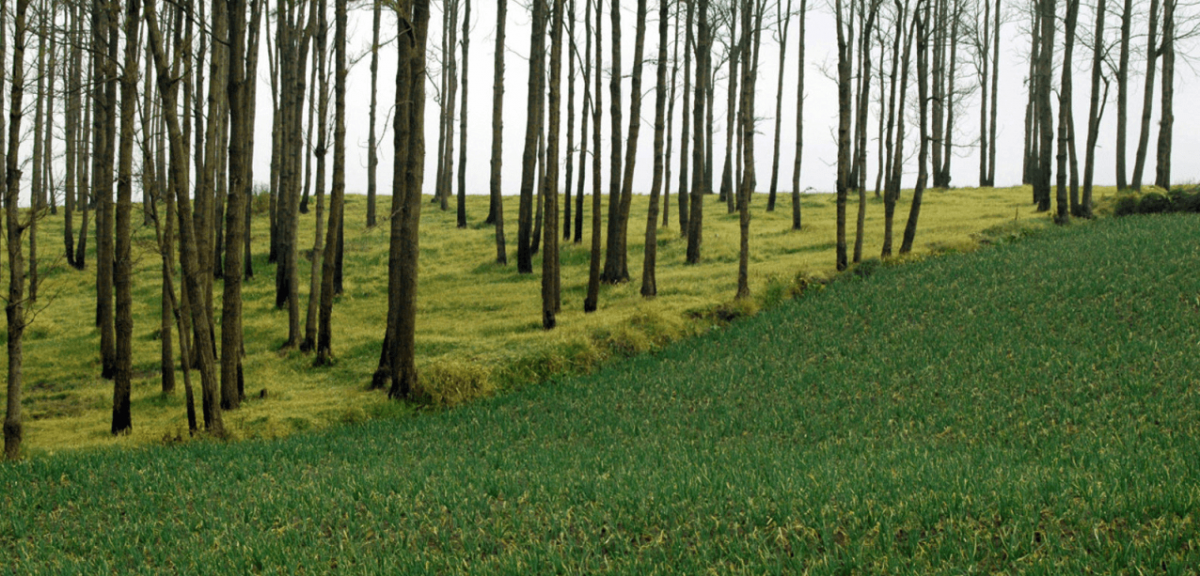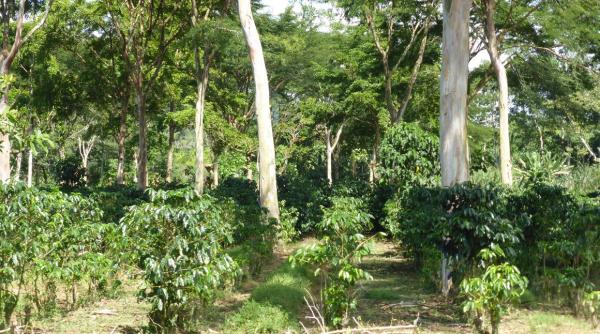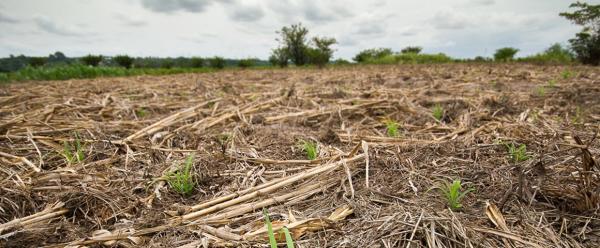Call to action 16 April 2025
- Home
- Press area
- Press releases
- Boosting land use efficiency to mitigate climate change
Boosting land use efficiency to mitigate climate change

Managing land use on a landscape scale is one way of mitigating climate change and adapting to it © B. Locatelli, CIRAD
When it comes to climate and food issues, is it better to use land to grow maize, or soybean, or produce biofuels, or meat, or to convert it to planted forest? This is the type of question addressed in a study published on 13 December in Nature . This new study looked into the land use changes required to produce as much food as we do now, while storing carbon, to mitigate climate change.
Tim Searchinger, from Princeton University, the study's lead author, stresses the importance of measuring how each hectare of land is used if we are to achieve global climate objectives, pointing out that the methods used to date considerably underestimated the climate consequences of land use decisions.
Patrice Dumas from CIRAD, co-author of the study, explains: "The new method estimates the amount of greenhouse gas (GHG) emitted on average to produce a kilogram of food" . It takes account of the drop in carbon storage when land is converted from forest or savannah to agriculture and of the emissions generated by agricultural production. "The method serves to assess the emissions resulting from a change in agricultural production, in terms of deforestation or reforestation, and to include them in assessments of the emissions generated by land use changes" , Patrice Dumas points out.
In particular, the study highlights the fact that:
- The diet of an "average" European generates as much GHG** over a 30-year period as their consumption of everything else combined, including energy.
- A hectare of well-managed pasture in Brazil has the same carbon storage capacity as a hectare of replanted forest in Europe or the US.
- Due to the deforestation they cause, most biofuels generate between one and a half and three times as much GHG as oil-based fuels over a 30-year-plus period.
Tim Searchinger adds that policymakers must work to influence both land managers and consumers, while helping farmers improve their climate efficiency. He explains that beef is generally very climate-inefficient and that by eating less beef, lamb and dairy, we could cut our GHG emissions by up to 70%. Likewise, livestock farmers can reduce the impact of production on climate by improving the methods used.
'"This new study highlights the merits of a foresight study of land use and its impact on food security, Agrimonde-Terra. Of the five scenarios proposed, there is just one, the "Healthy" scenario, in which agriculture helps to mitigate climate change, while preserving natural resources and creating jobs", says CIRAD's Marie de Lattre Gasquet, co-author of Land Use and Food Security in 2050: a Narrow Road .
That "healthy" scenario calls for ambitious, long-term public policies, as pointed out in an opinion column by the Presidents of CIRAD and INRA in the Le Monde newspaper in November.
Reference
Timothy D. Searchinger (1), Stefan Wirsenius (2), Tim Beringer (3), Patrice Dumas (4). 2018. Assessing the efficiency of changes in land use for mitigating climate change. Nature
(1) Princeton University, USA
(2) Chalmers University of Technology, Gothenburg, Sweden
(3) Humboldt-Universität zu Berlin, Germany
(4) CIRAD, France
* This research was funded by the David and Lucille Packard Foundation and the Norwegian Agency for Development Cooperation.
** GHG = greenhouse gas (nitrous oxide, carbon dioxide, methane).
On Thursday 13 December, 150 representatives of ministries, donors, agricultural and agrifood firms, NGOs and research organizations were meeting in Katowice, Poland, for the annual "4per1000" initiative day. The day is an opportunity, among other things, to pursue the research aspects of this initiative on soils for food security and climate. The research programme includes a study of the mechanisms involved in and an estimate of the potential for carbon storage in soils; an assessment of the performance of virtuous land management practices and their consequences for organic carbon capture by soils; a study of the conditions that favour the maintenance of and increase in soil carbon stocks in the short, medium and long term; and monitoring, notification and verification of the results of the capture operations conducted.



























